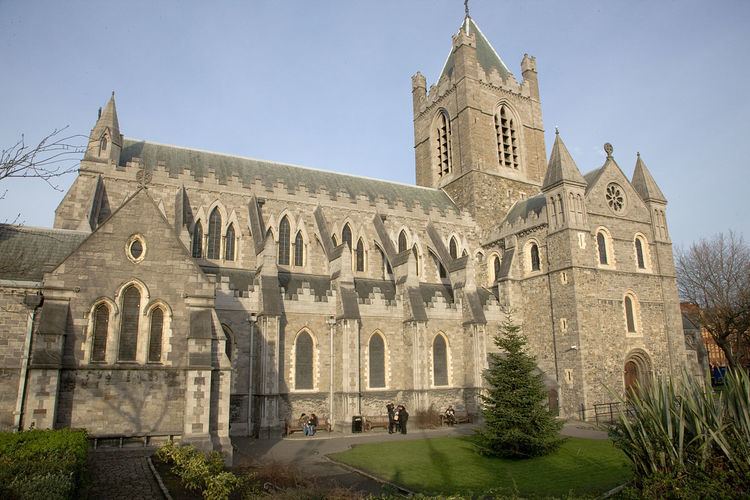Name John St | ||
 | ||
John de St Paul (c. 1295 – 1362), also known as John de Owston and John de Ouston, was an English-born cleric and judge of the fourteenth century. He was Archbishop of Dublin 1349–62 and Lord Chancellor of Ireland 1350–56. He had previously been Master of the Rolls in England 1337–40. Apart from a brief period of disgrace in 1340, he enjoyed the confidence of King Edward III. He was described as a zealous advocate of English policy in Ireland, but also as a pragmatic statesman, who was willing to conciliate the Anglo-Irish ruling class. He did much to enlarge and beautify Christ Church, Dublin, although virtually no trace of his work survives, having been destroyed by the Victorian rebuilding of the Cathedral .
Contents
Family
The St Paul family are thought to have come to Yorkshire from Guienne. They may have had a family connection to the Counts of Saint-Pol, since Marie de St Pol, Countess of Pembroke, often employed John as her attorney.
He was born about 1295, probably at Owston, South Yorkshire. He was most likely the son of Thomas de St Paul, and brother to Robert de St Paul, Lord of the manor of Byram cum Sutton. He was said to be illegitimate, although this was later contradicted.
Early career
He was appointed a clerk in the English Chancery in around 1318 and became rector of Ashby David in Lincoln in 1329, the first of numerous clerical benefices he was to receive, of which probably the most important was the office of Archdeacon of Cornwall. From 1334 he was regularly appointed guardian of the Great Seal in the absence of the Lord Chancellor and in 1337 he became Master of the Rolls. He was granted a house in Chancery Lane in 1339. He was briefly Lord Keeper in 1339.
Disgrace
In 1340 King Edward III, while engaged with the Siege of Tournai, received numerous complaints of corruption and maladministration against his officials. He returned to England with great speed, and dismissed most of the offending officials, including St Paul, who was imprisoned and deprived of the Mastership of the Rolls. After a personal plea for clemency on his behalf by the Archbishop of Canterbury, John de Stratford, St Paul was soon released from custody, but he was not restored to the Mastership.
Archbishop of Dublin
In 1349 he was made Archbishop of Dublin. He received a commission from Pope Clement VI to proceed against certain heretics who, having fled from the Diocese of Ossory, had been sheltered by his predecessor, Alexander de Bicknor. He held a Synod in Dublin in 1351, which dealt with a wide range of issues, including the observance of Good Friday, the banning of secret marriages, and the ritual of genuflection. He maintained the long-running dispute with Richard FitzRalph, Archbishop of Armagh over the latter's claim to be Primate of Ireland. He persuaded the King to revoke his order which gave the See of Armagh precedence, and to remove the cause to Rome for the Pope's adjudication. He obtained numerous benefits for the Archdiocese of Dublin. His extensive additions to Christ Church Cathedral, which he undertook at his own expense, included the long choir (1358) and the new organ. Most of his innovations, including the "long quire" were destroyed in the 1870s, when the interior of the cathedral was altered almost beyond recognition.
Chancellor and statesman
He was Lord Chancellor of Ireland, with one brief interval, from 1350 to 1356. In 1358 he was appointed to the Privy Council of Ireland, and the Lord Deputy of Ireland was instructed to pay great heed to his advice. He sat on a Royal Commission to explore for and oversee gold and silver mines in 1360.
In 1361 he was summoned to a Great Council in Dublin: although he was a strong supporter of English rule in Ireland, he urged a policy of moderation and an amnesty for Anglo-Irish leaders who had been in opposition to the Crown. He also advised that the gentry of the Pale should live permanently on their estates and fortify their homes.
Death
He died on 9 September 1362 and was buried in Christ Church Cathedral, which he had done much to improve at his own expense, under the high altar.
